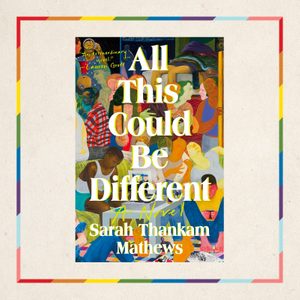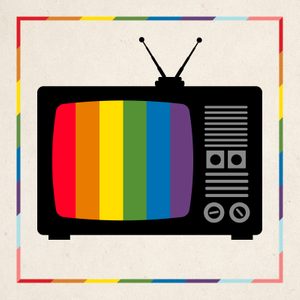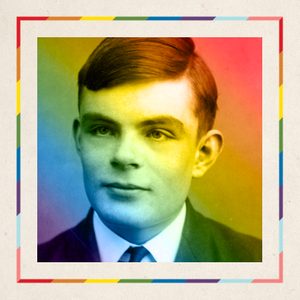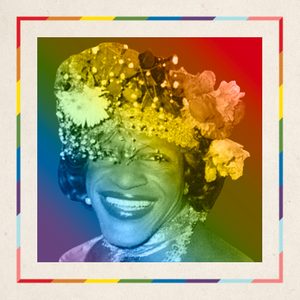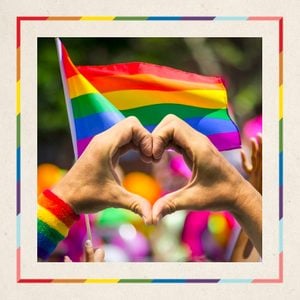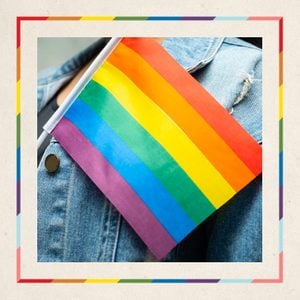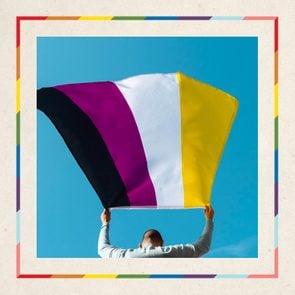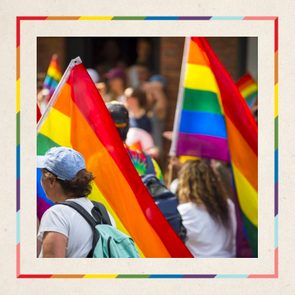The History of Pride Month: What to Know About This LGBTQ+ Celebration
Updated: Jun. 22, 2023
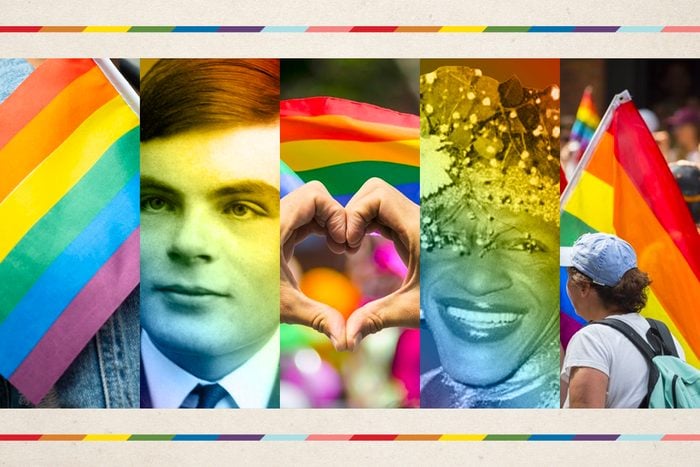
Pride Month is celebrated each June, but how did it come to be? Read on to learn who helped pave the way for this LGBTQ+ celebration.
Each June, communities across the globe celebrate Pride Month—a time to spotlight the LGBTQ+ community, recognize its contributions and raise awareness about the issues it faces today. Pride celebrations have been around for decades, and there’s more than one way to celebrate all month long. You can attend jubilant parades and proudly wave LGBTQ flags, volunteer with LGBTQ+ charities, support LGBTQ-owned businesses, read inspiring LGBTQ quotes that highlight the struggles and triumphs of the movement and dedicate time to learn more about the LGBTQ+ community as a whole.
Pride is a meaningful month for the community—but what exactly does the history of Pride Month entail? Well, to answer that, we have to go back to New York City in the 1960s—when an incident at a gay bar sparked a movement.

What is the history of Pride Month?
The catalyst for Pride Month started in 1969 Manhattan with the Stonewall Riots, also referred to as the Stonewall Uprising. At the center of those riots was the Stonewall Inn, purchased by the Genovese Mafia family in 1966 and opened the following year as a gay bar. It was one of the few in New York City that welcomed drag queens and allowed dancing, and homeless gay runaways sought refuge there night after night.
Police raids were regular, as they were for other gay bars in the city, but for a quid pro quo $1,200 monthly payment by the owners, the cops would tip them off beforehand so they could hide the booze being sold illegally (Stonewall had no liquor license). However, on the night of June 28, 1969, the police showed up at Stonewall without warning. They physically assaulted customers and arrested 13 employees and patrons who were in violation of liquor laws and a New York statute requiring gender-appropriate clothing to be worn in public.
“The police came in, and they tell me: ‘What are you doing here?’ I said, ‘Well, I came in here to just see a friend.’ They said, ‘Get out of here!’” transgender activist Judy Bowen, who had just finished her shift at a nearby dance club, told PBS in 2019. “So, as soon as I got outside, they locked the door, and then I started hearing screams of people being beaten. Those things you do not forget.”
This night, though, the 200 or so patrons weren’t going down easily. Perhaps emboldened by the civil rights movement of the 1950s and early ’60s that had resulted in the Civil Rights Act of 1964, they fought back, throwing bottles and bricks. The cops barricaded themselves inside the bar and called for backup as the crowd outside tossed makeshift firebombs at the barricade. A few officers were injured that night and several protesters required medical treatment, but no one died or was critically wounded.
Although the police managed to disperse the crowd after about an hour, and the fire department put out the fires, the events of that night set off days of protests. Thousands joined in, and the demonstrations spread to nearby Christopher Square and neighboring streets, with occasional bursts of violence flaring up. While the riots didn’t immediately change anything for the LGBTQ community, it was a galvanizing force that inspired them to seek true equality.
While the Stonewall Riots are the most famous examples of the LGBTQ+ community taking a stand, there were several LGBTQ+ uprisings that predated Stonewall. They include:
- The Cooper Do-Nuts Riot (Los Angeles, 1958)
- Dewey’s Sit-In (Philadelphia, 1965)
- Compton’s Cafeteria Riot (San Francisco, 1966)

LGBTQ+ in History and Culture
When did Pride Month begin?
Another key moment in Pride Month history came in 1970, on the first anniversary of the Stonewall Riots. That’s when thousands of people marched from the Stonewall Inn to Central Park for Christopher Street Liberation Day, the first gay pride parade in the United States. Thousands were inspired by the march, and as such, Pride celebrations grew within the United States and abroad. It grew so much that in 2000, then-president Bill Clinton declared June as Gay and Lesbian Pride Month; former president Barack Obama updated it to Lesbian, Gay, Bisexual, and Transgender Pride Month in 2011.
Pride Month, celebrated in June each year, is a time to celebrate the LGBTQ+ community, commemorate the progress that’s been made and reflect on what still needs to be done. One way to celebrate is to read up on LGBTQ+ history and stories from the community—like the ones below.

Pride Month Must-Reads
Additional reporting by Kelly Kuehn.
Sources:
- History.com: “Stonewall Riots”
- History.com: “How Dressing in Drag Was Labeled a Crime in the 20th Century”
- PBS: “Why Did the Mafia Own the Bar?”
- PBS: “What Stonewall means to the people who were there”
- Library of Congress: “About Lesbian, Gay, Bisexual, Transgender and Queer Pride Month”
- University of Central Florida: “Why Do We Celebrate Pride Month in June and LGBT History Month in October?”
- History.com: “7 LGBTQ Uprisings Before Stonewall”

